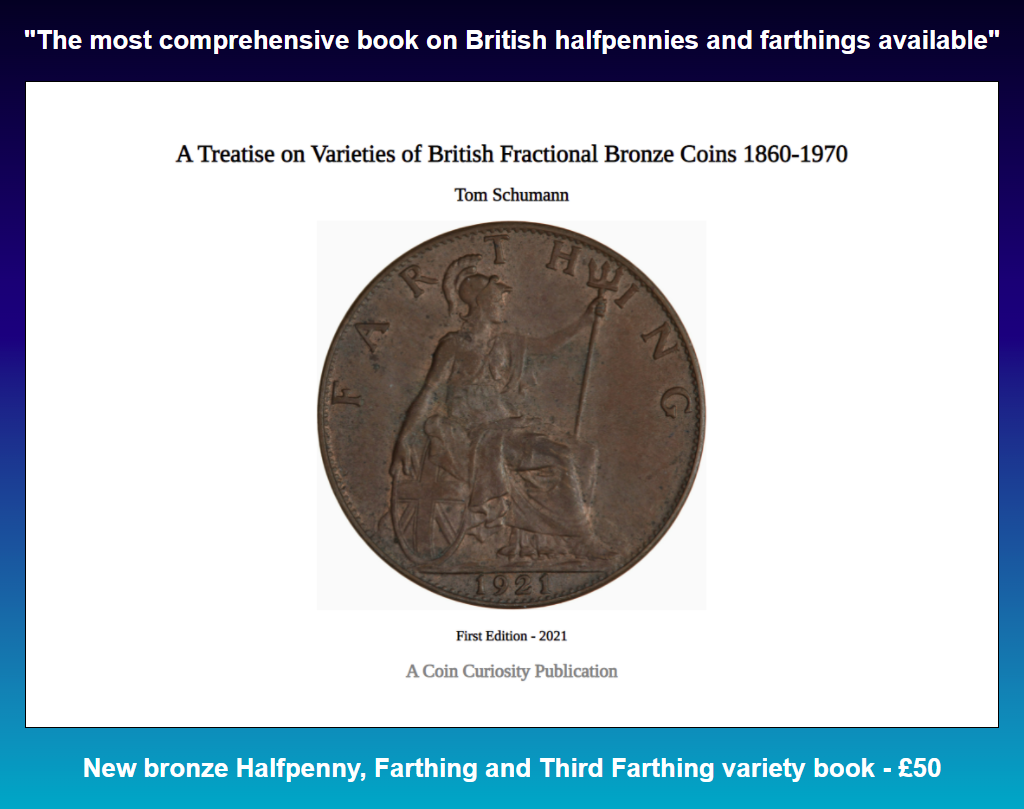1862 British Penny Varieties
In 1862 both the Royal Mint and James Watt continued to strike British pennies as part of the replacement of the old copper pence with smaller and lighter bronze pence. As in 1860 and 1861, a majority of the production was outsourced, with James Watt striking the vast majority of 1862-dated pennies (p38, Gouby, The British Bronze Coinage Pence, Halfpence & Farthings, 1860 - 1869, 2006).
| Mint | Mintage |
|---|---|
| Royal Mint | 1,827,840 |
| James Watt | 48,706,560 |
No mintmarks or distinguishing marks were used by James Watt, so their coins are indistinguishable from those struck by the Royal Mint. Multiple different obverse dies were used to strike 1862-dated pennies however, and Michael Gouby's research suggests that while obverse 6 was used by both mints, only the Royal Mint used obverses 2 and 3, with the older dies likely being put to use after being returned from the Heaton Mint which struck pennies in 1860 and 1861 (p55, Gouby, The British Bronze Coinage Pence, Halfpence & Farthings, 1860 - 1869, 2006). All 1862 pennies were struck with reverse G.
| Die | Description |
|---|---|
| Obverse 2 | L.C. WYON under bust; D of F:D: points between teeth |
| Obverse 3 | L.C. WYON under bust; D of F:D: points at tooth |
| Obverse 6 | No L.C. WYON under bust |
Obverse 2 and 3 coins are both very rare - Freeman's survey found no obverse 3 coins at all, and Gouby recorded seven known obverse 2 coins and three known obverse 3 coins (p55, Gouby, The British Bronze Coinage Pence, Halfpence & Farthings, 1860 - 1869, 2006).
A small number of 1862-dated pennies were also struck with a reverse die that was created using a halfpenny numeral punch. The halfpenny date 1862 pennies were only struck with obverse 6 and are also rare.

